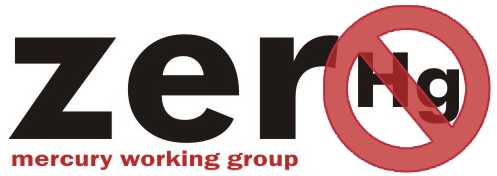Artisanal Small Scale Gold mining (ASGM)
Artisanal and small-scale gold mining (ASGM) is a complex global development issue.
ASGM uses substantial amounts of mercury in mineral processing usually in highly unsafe and environmentally hazardous conditions. Mercury is used to bind the gold to form an amalgam, which helps separate it from the rock, sand and other materials. The amalgam is then heated to vaporize the mercury leaving the gold behind.
The use of mercury in ASGM continues to rise especially in developing countries mainly because it is considered simple and inexpensive. It is believed that ASGM produces around 12-15% of the world’s primary mined gold (approximately 600-650 tonnes per annum).
An estimated 10-15 million artisanal and small- scale gold miners, including 4.5 million women and 1 million children globally, in approximately 70 countries are involved and eventually exposed to mercury.
ASGM is the largest sector for mercury consumption globally (estimated at 872-2598 tonnes in 2015).
The amount of mercury released within ASGM is dependent on the technique applied. Once materials have been extracted, either from alluvial deposits (such as river sediments) or hard rock deposits (gold in quartz veins) they need to be processed to liberate the gold from other minerals. Crushing or milling are often used for hard rock deposits, whereas alluvial gold tends to be already liberated. Once the gold is liberated, gravity concentration techniques or others are applied to further concentrate the gold, free of other invaluable minerals. Mercury is used to capture gold particles during the ore processing stages in ASGM through a process called amalgamation. Mercury acts like a magnet to gold and bonds with it, creating an approximately 50-50% alloy of mercury and gold, which permits the gold to separate from the rest of the minerals.
Toolbox
A Miners' consultation guide:
- ENGAGING ARTISANAL AND SMALL SCALE GOLD MINERS IN THE NAP
- IMPLIQUER LES MINEURS ARTISANAUX ET A PETITE ECHELLE D OR DANS LE DEVELOPPEMENT DU NAP
Baseline information for Tanzania:
Baseline information for Ghana:
The amount of mercury released within ASGM is dependent on the technique applied:
-
Whole Ore amalgamation
In this process, mercury is added to a large amount of ore during crushing or sluicing, with little or no prior concentration. This is the most polluting way to use mercury, and considered a worst-practice by the Minamata Convention. In many cases, only 10% of the mercury added to an amalgamating barrel or pan combines with gold to produce the amalgam. The rest (90%) is excess and must be recycled or released into the environment. This subsequently leads to widespread mercury levels in the surrounding environment and the most severe health exposure to the miners as well as non-miners.
-
Concentrate Amalgamation
This practice occurs when mercury is added to an already concentrate mass of ore. Often, panning is used to further concentrate the gold and wash away lighter particles. Mercury is then added to the concentrates in order to amalgamate or gather the fine gold particles. About 10-15% of mercury releases from the ASGM are as a result of this process.
-
Burning of amalgam
Finally, in order to separate the gold, the amalgam is burnt in a metal pan over an open fire. When this is done without the use of a mercury capturing system, around 95% of mercury used is released into the environment, mainly mercury vapours released into the air and inhaled by the miners. The use of retorts to collect the mercury vapour can prevent mercury release into the atmosphere therefore reducing exposure to miners and the surrounding communities. With the use of retorts, about 95% of the mercury is recycled and can be re-used.
Annual emissions from ASGM are estimated at 727 tonnes worldwide, making this the largest sector accounting for more than 35% of total anthropogenic emissions . (GMP, 2013).
Low mercury and mercury free solutions are available.
Relevant legislation and NGO policy work
Globally
The Minamata Convention on Mercury, under Article 7 requires that Each Party that has artisanal small scale gold mining and processing subject to this article within is territory shall take steps to reduce, and where feasible eliminate, the use of mercury and mercury compounds in, and the emissions and releases to the environment of mercury from, such mining and processing. Each Party shall determine whether ASGM is more than insignificant in its territory and if so, it shall develop and implement a national action plan in accordance with Annex C, submit it to the Secretariat no later than 3 years after entry into force of the Convention of it or 3 years after the notification to the Secretariat and thereafter review every 3 years the progress made.
Important work has also been done under the UNEP Global Mercury Partnership on Reducing mercury in ASGM.
Several projects and initiatives have been and are taking place globally, to reduce emissions from the sector.
The ZMWG has been following this issue closely and has been giving respective feedback at the global mercury negotiations. See also the ZMWG fact sheet on Artisanal and Small Scale Gold mining (ASGM) (Jan 2011)

Projects on ASGM have been supported by the ZMWG in Tanzania, Ghana, Kenya, Indonesia, and the Philippines
In the EU
In the EU no ASGM takes place, apart from the French territories of Guiana- where officially mercury use is prohibited under French law.
Regulation (EU) 2017/852 covers the full life cycle of mercury and prohibits the use of mercury in the ASGM sector.

